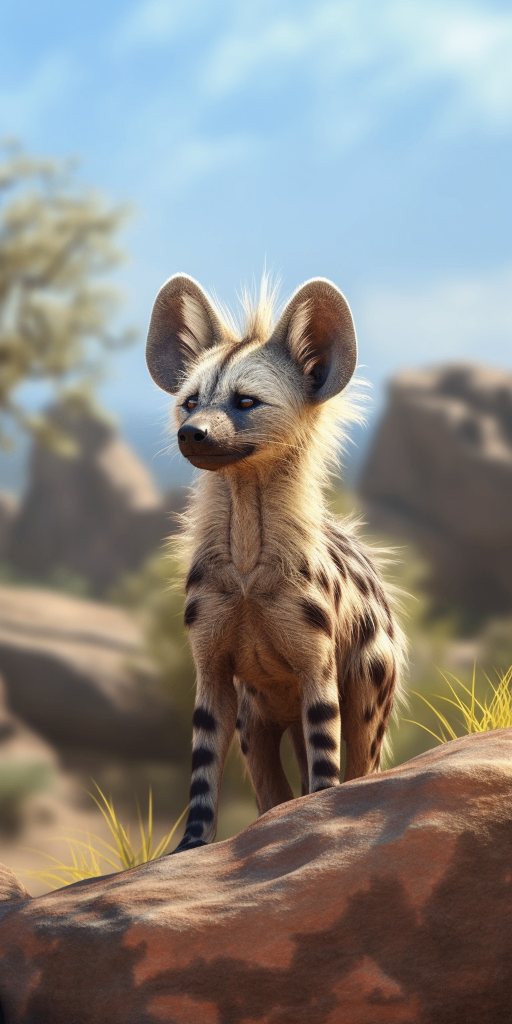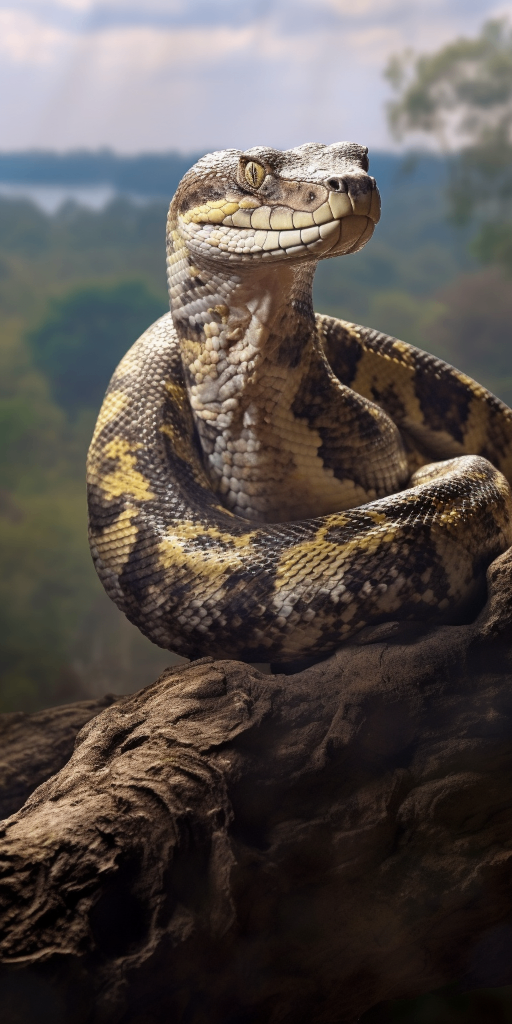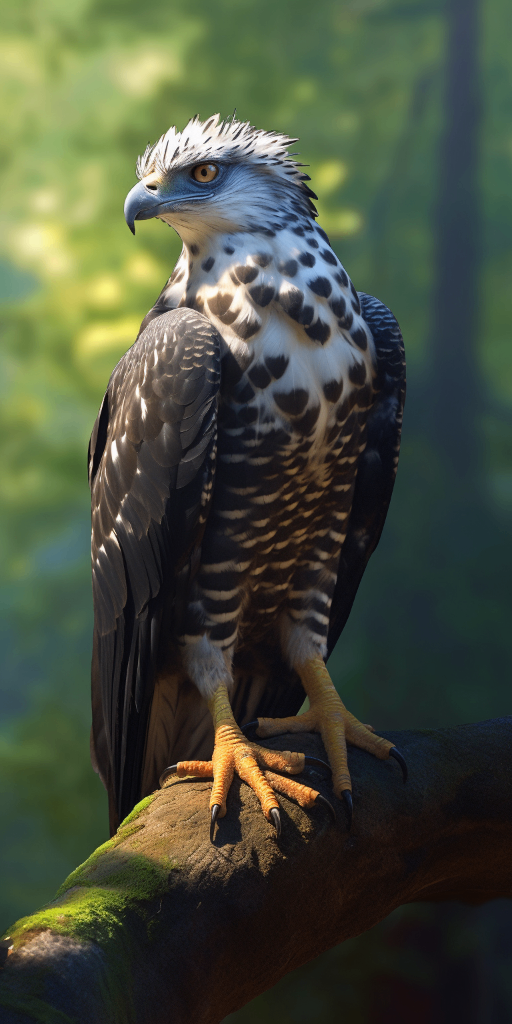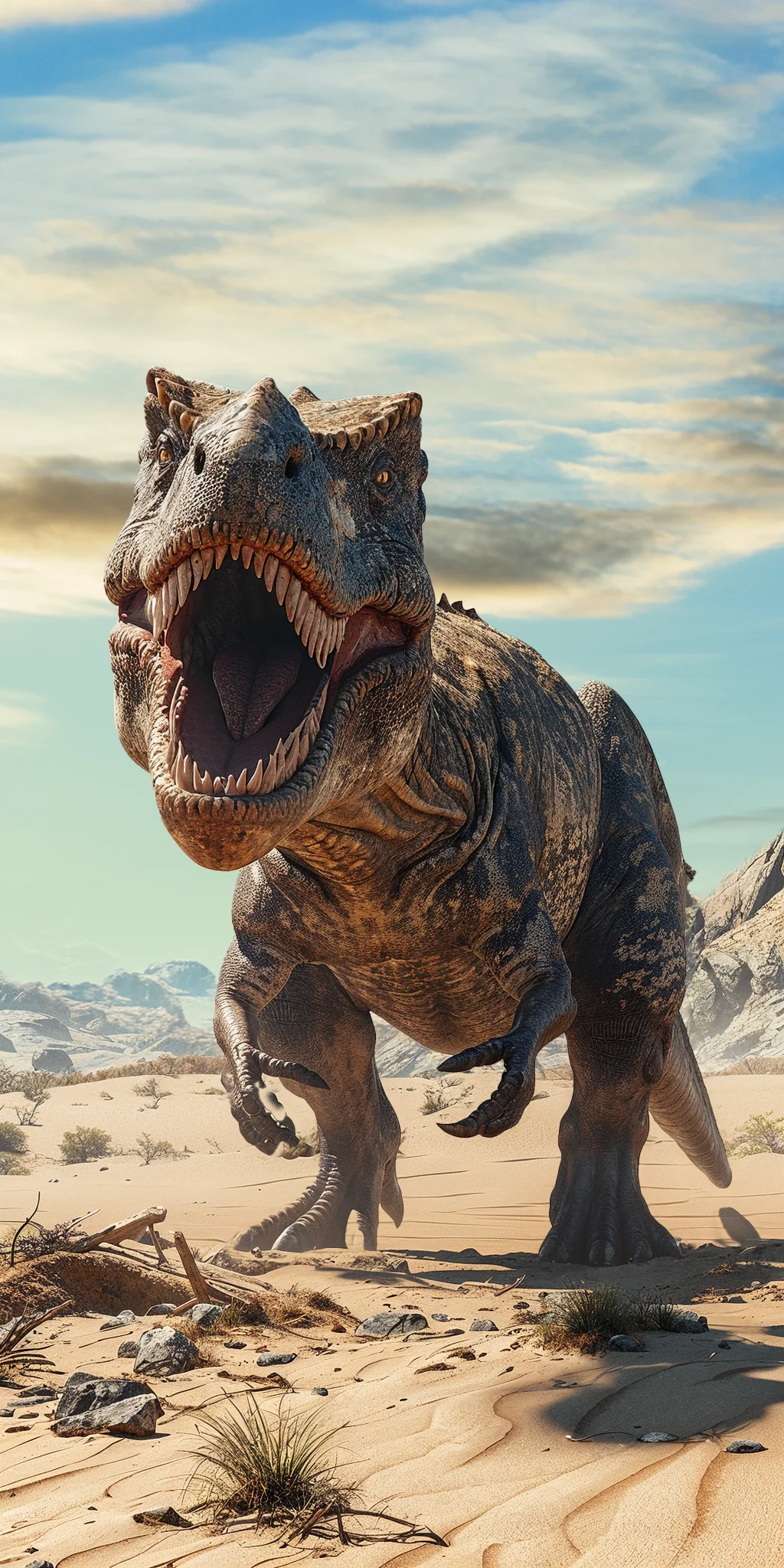The Tyrannotitan
Tyrannotitan, also known as the "Tyrant Titan," was a large carnivorous dinosaur from the Late Cretaceous period. It belonged to the group of theropods, known for their strong jaws and sharp teeth. Tyrannotitan had a robust build with powerful legs, a massive skull, and sharp claws. It measured around 40 feet in length and weighed several tons, making it one of the largest carnivorous dinosaurs in its time.
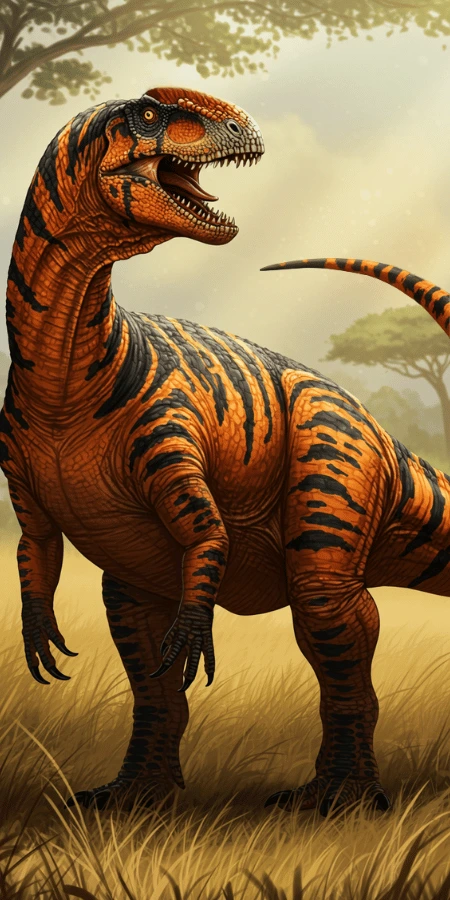
| Tyrannotitan | |
|---|---|
| Size | Up to 40 feet in length (12 meters) |
| Weight | Around 8 tons (7,257 kilograms) |
| Speed | 20-25mph (32-40km/h) |
| Key Strength | Bite force |
| Biggest Weakness | Speed |
| Scientific Name | Tyrannotitan |
| Family | Carcharodontosauridae |
| Habitat | Woodlands and grasslands |
| Geography | South America |
| Diet | Carnivorous |
| Lifespan | 25 years - 30 years |

The Tyrannotitan
Tyrannotitan, also known as the "Tyrant Titan," was a large carnivorous dinosaur from the Late Cretaceous period. It belonged to the group of theropods, known for their strong jaws and sharp teeth. Tyrannotitan had a robust build with powerful legs, a massive skull, and sharp claws. It measured around 40 feet in length and weighed several tons, making it one of the largest carnivorous dinosaurs in its time.
Fun Fact: Tyrannotitan's name translates to "Tyrant Titan," reflecting its status as a top predator in its ecosystem.
| Tyrannotitan | |
|---|---|
| Size | Up to 40 feet in length (12 meters) |
| Weight | Around 8 tons (7,257 kilograms) |
| Speed | 20-25mph (32-40km/h) |
| Key Strength | Bite force |
| Biggest Weakness | Speed |
| Scientific Name | Tyrannotitan |
| Family | Carcharodontosauridae |
| Habitat | Woodlands and grasslands |
| Geography | South America |
| Diet | Carnivorous |
| Lifespan | 25 years - 30 years |
Tyrannotitan Matchups
We use AI to simulate matchups between the Tyrannotitan and other animals. Our simulation considers size, strength, and natural predatory behaviors to determine the most likely outcome.
Tyrannotitan: Diet, Predators, Aggression, and Defensive Behaviors
What did Tyrannotitans eat?
Tyrannotitans were carnivorous predators that primarily fed on large herbivorous dinosaurs such as sauropods and ornithopods. They had sharp, serrated teeth designed for tearing through flesh and powerful jaws for efficiently consuming their prey.
Did Tyrannotitans have any predators?
As apex predators, Tyrannotitans did not have many natural predators in their environment. However, they may have occasionally faced competition from other large carnivorous dinosaurs, such as other species of theropods or rival Tyrannotitans, for resources and territory.
Were Tyrannotitans aggressive?
Tyrannotitans were known to be aggressive predators, especially when defending their territory or hunting for food. They used their size, strength, and fearsome appearance to intimidate potential threats or rivals, and they were not afraid to engage in confrontations to establish dominance.
Did Tyrannotitans fight?
Tyrannotitans were territorial animals that may have engaged in fights with other members of their own species or with rival predators. These fights could have been brutal and often involved displays of dominance, such as roaring, biting, and clawing, to establish hierarchy or claim territory.
How did Tyrannotitans defend themselves?
Tyrannotitans had several defense mechanisms to protect themselves from threats or attacks. Their large size and strength made them formidable opponents, and they could have used their powerful jaws and sharp claws to fend off potential predators. They may have also relied on their speed and agility to evade danger and escape from threatening situations.
What was Tyrannotitans' biggest weakness in a fight?
Despite their formidable size and strength, Tyrannotitans had a notable vulnerability in their relatively short arms. While their arms were strong and equipped with sharp claws, they had limited range of motion and dexterity compared to their large bodies and powerful jaws. This limitation could have been exploited by agile predators or rivals in a fight, making the Tyrannotitan's arms a potential weak spot.
Fun Fact: Despite its size and ferocious appearance, recent studies suggest that Tyrannotitan may have been a scavenger rather than an active hunter.
Fun Fact: Tyrannotitan is believed to have lived in what is now Argentina, where fossils of this dinosaur have been discovered in the Patagonia region.



